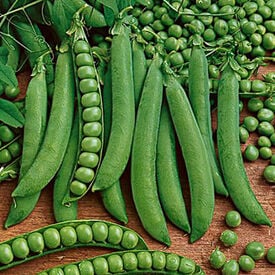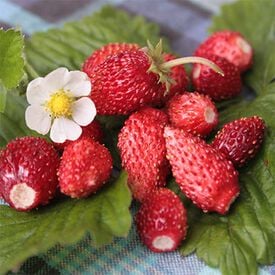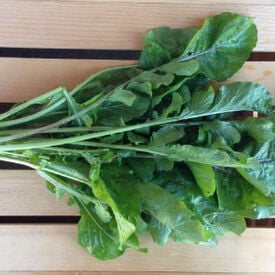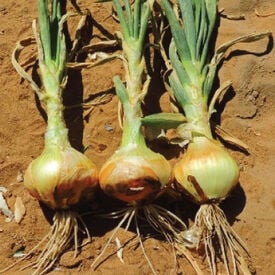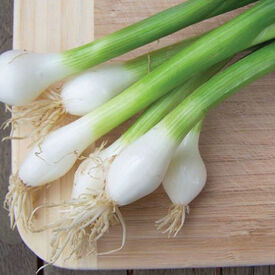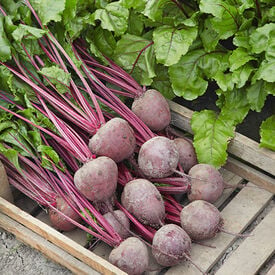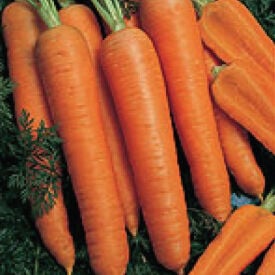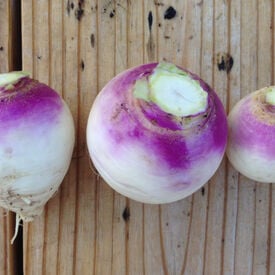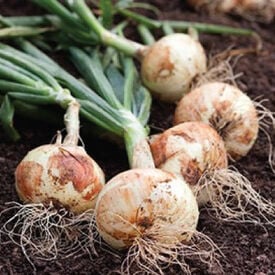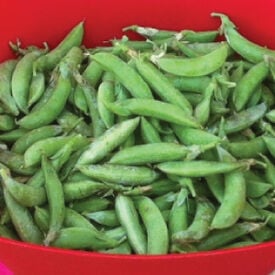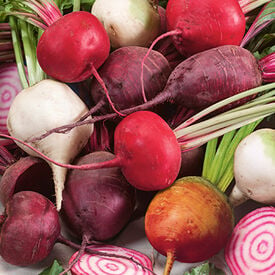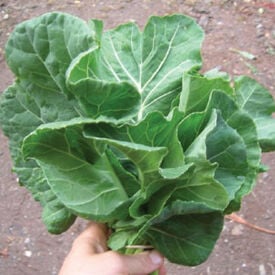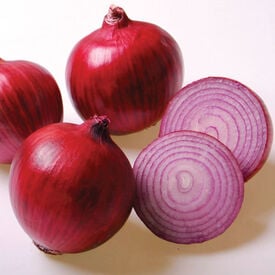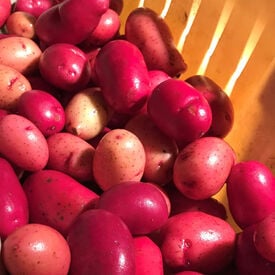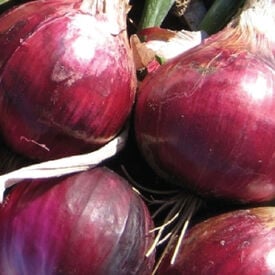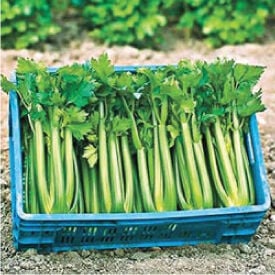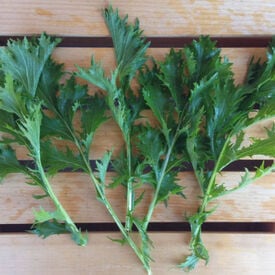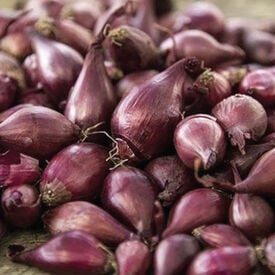Green Arrow peas are a classic heirloom variety valued for their exceptional taste and reliable performance. Originating from the United Kingdom, this variety has been a staple in gardens for many decades. The Green Arrow pea plant is known for its vigorous, upright growth habit, typically reaching heights of 2 to 3 feet, making it suitable for small to medium-sized gardens and easy to manage without extensive support. The peas themselves are distinguished by their smooth, bright green pods and plump, tender peas that offer a sweet, fresh flavor. These peas are primarily used for fresh eating, though they are also excellent for freezing. They are generally harvested when the pods are fully formed but still tender, usually in late spring to early summer. The Green Arrow variety is appreciated for its high yield and disease resistance, which contribute to a bountiful harvest. With its sweet flavor, productive growth, and ease of cultivation, Green Arrow peas remain a popular choice among gardeners seeking a dependable and delicious pea variety.
Red Wonder, aka Fraises des Bois, is a tasty Alpine Strawberry that is easy to grow from seed. Red Wonder is one of our favorites because it's considerably sweeter than most strawberries. An everbearing strawberry plant that produces all summer long.
Astro Arugula is a popular arugula type with spicy flavor! This standard arugula is grown for it's long, green leaves. Astro is fast growing and will withstand cold temperatures. This arugula is best harvested at baby size. If you want to spice up your salads and meals, then the Astro Arugula will be the perfect addition to your garden!
Yellow Sweet Spanish onion seeds grow into a classic heirloom variety that dates back to the early 20th century, prized for its large, globe-shaped bulbs and mild, sweet flavor. These onions typically reach 4–6 inches in diameter and feature golden-yellow skin with crisp, white flesh inside. They thrive in full sun and loose, well-drained soil rich in organic matter, requiring consistent moisture and a long growing season of about 110 days. Seeds can be started indoors 8–10 weeks before the last frost or sown directly once the soil warms. The resulting onions are excellent for fresh eating, caramelizing, or adding a subtle sweetness to soups, salads, and sandwiches.
The Tokyo Long Bunching Onion is a tender bunching type, loved by many chefs! This long variety grows an upright single stalk with dark green leaves little, white crisp bulbs. This tender and tasty onion is also heat tolerant.
The Lutz Green Leaf Red Stem Beet has a beautiful deep red hue and a mouth watering taste that pairs perfectly with any dish. This variety is known for having huge glossy, deep green tops that are amazingly delicious! This beet is a "winterkeeper" beet that has a long standing storage capability. The Lutz Green Leaf Red Stem has 6 inches in diameter roots.
Napoli F1 carrot seeds are a popular variety known for producing high-quality, uniform carrots with excellent flavor and texture. This carrot has a bright orange color with a length of 7-8 inches. This hybrid variety is prized for its smooth, cylindrical shape, bright orange color, and sweet, crisp taste. Napoli F1 carrots are well-suited for both fresh market sales and processing, offering consistent size and a strong resistance to diseases like alternaria and bacterial blight. They are fast-growing, with a relatively short maturation period, making them ideal for growers looking for early-season harvests. With their attractive appearance and superior taste, Napoli F1 carrots are a favorite among farmers and gardeners seeking a high-yielding, reliable carrot variety.
The Purple Top White Globe Turnip is a beautifully purple and white colored turnip that is the best tasting turnip around! This turnip variety has a fine grained root that can grow as big as a baseball! The popular Purple Top White Globe is an excellent yielding turnip that is a great fall crop that gets even better with cold weather.
The White Sweet Spanish Onion is a long-day, standard large sweet onion! This variety is a variation of the Yellow Sweet Spanish, but has a sweet flavor and very little of the sharpness that some other onions have. The White Sweet Spanish is great for soups and salads that require a slight onion flavor. This onion has short storage.
Sugar Ann is a 1984 All America Selections winner! This snap pea variety has an edible pod that offers earliness, productivity, and a compact growth habit. The crisp, sweet succulent 3 inch pods are ready to eat in just 10 to 14 days ahead of the original Sugar Snap, and remain in prime eating condition for days.
The Rainbow Blend contains a kaleidoscope of orange, purple, red, white and multi-colored beet varieties that will make any dish pop! This colorful variety not only produces the brightest colored beets, but also the tastiest. This blend is a great addition to any garden, especially a container garden. Enjoy this beet blend in a salad, or roasted for a mouthwatering colorful plate.
The Champion collard is a tasty improved Vates selection! These large, dark green, cabbage-like leaves retain eating quality for up to 2 weeks or longer. Champion is a compact collard plant that has an increased bolt resistance and enhanced winter hardiness, truly making it a champion!
A dark rich red color characterizes this hybrid on the outside, and inside it has distinct ring development. Purple Haze has a good combination of maturity and bulb size. A good disease package compliments this vibrant and vigorous hybrid. Disease Rating: High tolerance to Pink Root and Bolting and Good Tolerance to Fusarium.
Clancy potato seed produces compact and healthy dark green plants with blue flowers. Resulting spuds are a beautiful ornamental mix ranging from red to rose blush skin tones with interiors of creamy white and yellow. Note: Clancy seeds are actual small seeds and will ship immediately year round.
Ruby onions are a vibrant variety of red onions known for their striking color and sweet, mild flavor. Characterized by their deep purple skin and crisp white flesh tinged with red, Ruby onions add a pop of color to salads, salsas, and various dishes. They are typically medium to large in size, making them versatile for both raw and cooked applications. Originating from traditional onion cultivation, Ruby onions are prized for their ability to balance sweetness with a subtle bite, enhancing the taste of many recipes. They are often used in fresh preparations like salads and sandwiches, but they also caramelize beautifully when cooked, bringing out their natural sugars. Harvesting typically occurs in late summer to early fall, about 90-100 days after planting, when the tops begin to yellow and fall over. Ruby onions thrive in well-drained soil and full sun, making them a popular choice for home gardeners. Their attractive appearance and delicious flavor make Ruby onions a favorite in both home kitchens and commercial markets.
The Tango is a reliable and fast growing celery variety! Tango celery is a great improvement over older celery varieties, as it is more tolerant of less than ideal conditions. This hybrid produces dark green, thick stalks with lots of great celery flavor. Certified Organic.
Mizuna Green Mustard is a tasty Asian spinach variety that is amazing raw in different salads or cooked. This variety's narrow green leaves are very tasty and have a non-pungent flavor. Mizuna Green Mustard is fast growing and produces high yields. This green is popularly used in many salad mixes! Organic seed available.
SPRING SHIPPING - The Red Karmen Onion Set is a delicious zesty, ruby red onion! Why take the time to start your onions from seed when you can have an already started onion set? Harvest the Red Karmen onion sets a couple months earlier.
